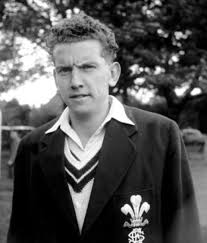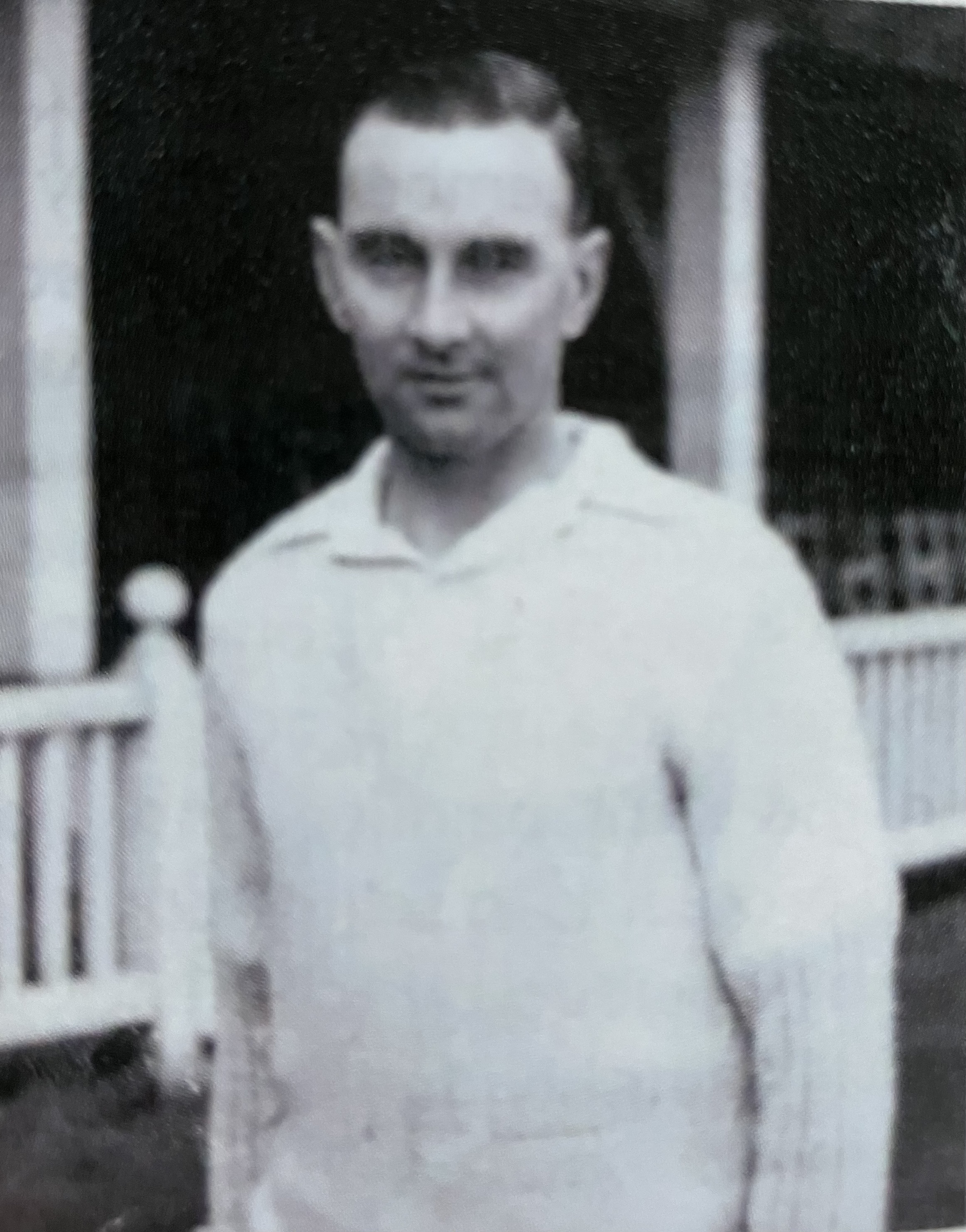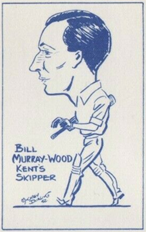The other day I stumbled across the scorecard of a match played in 1953 – Kent v Surrey at Blackheath, on July 11th, 13th and 14th. Match drawn. On the surface just another drawn county match, but a little research showed there was a lot going on just below the waterline, so to speak.
It was far from the normal county championship draw of the 1950s, when stubborn batting tended to neutralize dibbly-dobbly bowling on pitches which were either more like runways than mere roads, or else made lethal by a shower or two. This game was played on a wicket which was definitely at the road end of the scale, with apparently little danger for any enterprising batter.
Kent were suffering a disastrous season under the leadership of Bill Murray Wood, while Surrey were on their way to a second successive Championship, a string of titles which would not end until 1959, when Yorkshire prevented Surrey from winning for the eighth time in a row. Bill Murray Wood was an amateur who barely deserved his place in the side on cricket skills alone, but the generally accepted idea was that by definition an amateur made a better captain than a mere professional, so Murray Wood got the job after David Clark retired – Clark himself being another example of a good club player picked to lead the county side for his perceived captaincy skills.
Two players in this match were enjoying the best purple patches of their careers. Kent batted first, and in no time at all were dismissed for a mere 63. Purple patch number one was being enjoyed by young Surrey fast-medium bowler, Peter Loader, who went on to play 13 Tests for England despite having to compete for his place with the likes of Trueman, Statham and Tyson. In Kent’s innings he took 9 wickets for 28 runs, and would have taken all ten had Doug Wright not run himself out. This was the first of three successive games in which Loader took at least eight wickets in an innings, finishing this golden spell with 34 wickets in those three games at an average of less than 8. Wisden noted that “he gained little assistance from the pitch”. The only man who defied this onslaught was purple patchman number two, Kent’s number 6, Ted Witherden, who finished on 26 not out, up till then his highest ever first class score.

When Surrey batted, it was a different story. Early on, Ted Witherden took one of the nine wickets in his entire career when he enticed Bernie Constable out of his crease (st Ufton b Witherden 5) with his sporadic spin, but when Peter May joined opener Dave Fletcher, the game quickly slipped away from Kent. By close of play on the first day, Surrey had made 243 for 2, with both batters still there with centuries to their names. On day two, the slaughter continued until lunch, when Surrey declared at 302 for 5. Kent’s second innings started scarcely better than their first, and at 127 for 7 (Loader 4 wickets), they were still 112 behind Surrey with no batting of note left. But then Ted Witherden was joined at the wicket by his captain, Bill Murray Wood, who boasted a career batting average of less than 14. Together they put on 143 for the 8th wicket, to edge Kent ahead of Surrey’s total and nudge them towards safety. Even after Murray Wood was out for 93 on the third morning with the score on 268, Witherden put on a further 55 runs for the last two wickets, with the help of Doug Wright (10) and Colin Page (16). The Kent total of 323 (Witherden 125 not out) meant that Surrey were left with 85 to make for the victory, but before they could begin their second innings, the good old Kentish rain came down and saved the home side.
Witherden, a nudger and nurdler of runs rather than a flowing off-driver of the Cowdrey school, had begun his own little purple patch, which lasted for the next three matches. He followed up his 125 not out at Blackheath with a 50 against Warwickshire in the next game, and 100 v Worcestershire in the game after that – the only two first-class centuries of his career. A low pair of scores in the next game meant he was dropped for the Canterbury Week games, and although he played fairly regularly for the county over the next two seasons, he never managed to be more than a mediocre player in a mediocre batting line up, and after the 1955 season, he joined Norfolk to play Minor Counties cricket with them until 1962, scoring 13 centuries for them in that time. He lived until 2019, dying 5 days after his 97th birthday.

Bill Murray Wood’s Kent career imploded only a few weeks later. Although an excellent fielder, he was clearly not worth his place in the side as either a batter or a bowler, and, it seems, not as a captain either. He had only been the committee’s second choice to Tony Pawson, anyway, but Pawson had been too busy to take on the role. By the time Canterbury Week came round that August, it was clear that all was not well within the dressing room. Arthur Fagg, as senior professional, had been regularly complaining on the field that the captain never consulted him, but when Murray Wood got the hint from some of his players and began consulting Fagg about tactics more regularly, Fagg complained that it was “just like the committee to appoint a man who knows so little about the game that he has to ask me what to do all the time”. One of the committee subsequently let it be known that the whole team had told the chairman that they would not play again if Murray Wood continued as skipper. So the committee decided on the drastic step of sacking the captain in mid-season and replacing him with Doug Wright, a professional. Lord Harris would have been spinning in his grave.

Murray Wood was asked to resign, but refused, so the club announced his replacement in the middle of the second match of Canterbury Week, against Middlesex. Unfortunately, the story leaked out to the press before Murray Wood had been officially informed of his fate, so he learnt of his sacking while fielding, through the medium of a tactless evening newspaper seller shouting the headlines on the boundary. Unsurprisingly, Bill Murray Wood never set foot in the St Lawrence ground again. To be fair to the ill-fated captain, the Kent side was very weak, and any leader would have had a difficult time making a game of it against most of the other counties. But he clearly had lost the dressing room, and that Kent appointed a professional to succeed him proved to be one of the county’s first small steps into cricket’s future.
Of the three main protagonists in the Kent v Surrey game of 1953, for Peter Loader his purple patch proved to be just the beginning of a successful career. But for the two Kent men it was perhaps their swan songs, the best they could do in Kent careers that soon collapsed.
0 Comments